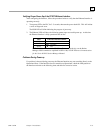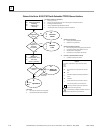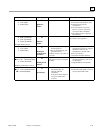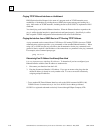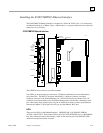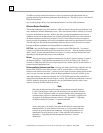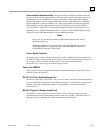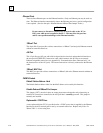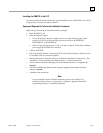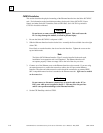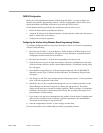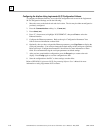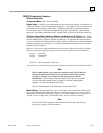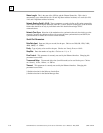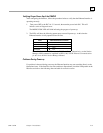
2-44 TCP/IP Ethernet Communications for the Series 90™ PLC User's Manual
–
May 2002 GFK-1541B
2
Ethernet Ports
There are three Ethernet ports on the Ethernet Interface. Only one Ethernet port may be used at a
time. The Ethernet Interface automatically detects the Ethernet port in use; special configuration
is not required. (See also the topic “Disable Onboard 10Base2 Port Jumper” below.)
Caution
Do not connect or disconnect a transceiver or network cable to the AUI or
BNC ports while power is applied to the PLC. This may blow the port fuse
and/or cause permanent damage to the Ethernet Interface.
10BaseT Port
This 8-pin, RJ-45 port provides a direct connection to a 10Base-T (twisted pair) Ethernet network
without an external transceiver.
AUI Port
This 15-pin, D-type AUI port with slide-lock provides the electrical and mechanical interface to
the user-provided IEEE 802.3 transceiver cable, which connects the AUI Port to an external
Ethernet compatible transceiver (see Appendix B, “Communications Ports Characteristics”, for
the characteristics of the AUI port). The external transceiver is directly connected to the Ethernet
cable.
10Base2, BNC Port
This BNC port provides a direct connection to a 10Base2 (thin wire) Ethernet network without an
external transceiver.
CMM742 Labels
Default Station Address Label
The Default Station Address label lists the MAC address to be used by this Interface.
Disable Onboard 10Base2 Port Jumper
This jumper (“JP7”) must be in place to ensure proper network operation only when using an
external AUI transceiver connected to the AUI port that is externally powered. This jumper is
normally not installed.
Replaceable +12VDC Fuse
A user-replaceable fuse (FU3) is provided on the +12VDC power that is supplied by the Ethernet
Interface to the AUI network port for use by an external transceiver. Replace only with a 5 x
20mm, 250V, 1 A, fast-acting fuse.




